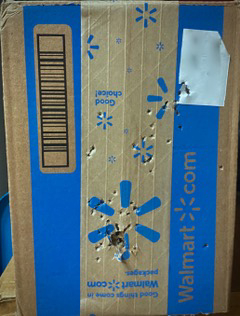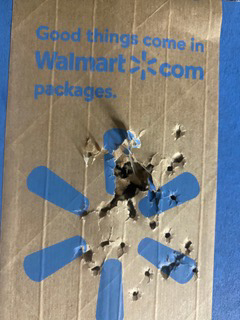As the world around us changes, almost on a daily basis, we’re all learning lessons. They can be anything from appreciating all those “prepper sounding” things we quietly did before coronavirus made us even more appreciative of our outdoor training, to the quiet regrets of wishing we’d paid a lot more attention to the family budget and savings accounts when it seemed nothing out of the ordinary could impact our economy.
In the still-accurate words of Heraclitus, “change is the only constant in life.”
Today, we find ourselves actually missing things we assiduously avoided only a few weeks ago. Our collective perspective has shifted about boring staff meetings, educational seminars and boring church services. When people in New York City go on their balconies to clap their appreciation for first responders and grocery workers, things have changed.
Talking with Rich Grassi on the phone yesterday, he told me what was happening reminded him of the days immediately after 911. “I’m at the range,” he told me, “it’s totally empty and there’s not a jet contrail anywhere in the sky.”
The absence of people on a shooting range and jets criss-crossing the skies really are pretty solid reminders that things are different. So, too, are the sounds of birds in our backyard. The birds are nothing new, but the absence of the background noises that normally mask their songs is part of the new situation.
It’s also become obvious that we’re going to be responsible for keeping ourselves current in some things where we normally rely on others for at least a part of our keeping our perishable skills sharp.
For me, one of the areas where I need the discipline of regular practice is shooting. At one point, not terribly long ago, I practiced several times every week. To the tune of thousands of rounds a year. Not the same quantities as the pros, but far more than most amateurs.
A combination of a lack of practice facilities, physical issues and time constraints cut that time back- drastically- a couple of years ago. I rationalized it away as being part of the natural progression of maturity. You know, get older, do some things less frequently.
This latest national emergency has again brought the realization that I’m my family’s front-line of defense into sharp focus.
Unfortunately, that sharp focus hasn’t extended to my front sight. It’s blurry to the point I realized it was time to stop cleaning and prepping my defensive tools and to get some solid practice time in.
Hard to do in a subdivision. Standing around outside doing dry fire drills would get a quick visit by the local PD. Live rounds would get the SWAT team.
That would be, as they say, no bueno.
Standing at my work bench yesterday, I was struck by the realization that I had several feet of potential shooting lane to either side of my bench. Pulling out the trusty measuring tape, I realized I had seven yards to one side, and just over five to the other. Plenty of room for precision shooting drills with a handgun…especially if said handgun was CO2 powered and pushing .177 caliber BBs, not 140 grains of lead.

It’s not a range in-a-box because the box is the range. If you have a CO2-powered pistol, a bunch of Amazon, FedEx and UPS padded shipping packages and a decent-sized shipping box, you have the makings of your own practice facility.
|
Today, I’m the proud assembler of what has to be the most pulled-together practice facility ever. And it’s compact. The entire target area to either side is only 10 1/4 x 20 inches. In case you’re wondering, that’s the size of the bottom of the Walmart home delivery boxes that had previously been cluttering up the free space in the garage.
I collected a pair of shipping boxes that had similar bottom dimensions, stuffed a couple of old catalogs in the bottom, then filled the rest of the space with loosely packed, padded shipping pouches from Amazon, FedEx and UPS. Then I taped the top up, turned the box on its side, and realized that I had more space the A-zone on most targets.
If I shot precisely, it would be more than adequate to allow me to practice.
My goal wasn’t to hammer out quick splits, make fast draws from a holster or run any of the drills I enjoy. In fact it was the exact opposite: bring the pistol up to a solid shooting position, carefully establish a sight picture and squeeze a controlled shot as closely to the center of my chosen target as possible.
Old school practice. The kind of practice that quickly points out the fact that many of us use speed as a substitute for accurate. The kind of practice that told me that maybe I’d stayed away from slow-fire a bit too-long.
I have several CO2 pistols, but only one that doesn’t fire pellets. And the goal was to practice, not blow the end out of my “range” and wind up repairing walls or water heaters afterwards.
So I found myself shooting an older model semiautomatic with a very long, sloppy trigger, hard-to-see sights, and a point of aim that meant I really had to pay attention.
The perfect gun to identify problems and force me to pay attention to every shot.

At first, my shots were exhibiting social distancing (above) but continuing to focus on the basics tightened up the groups and even enabled me to make hits on little 3/4” stars on the box.
 |
I couldn’t adjust the sights, so I began aiming at the centers of my targets and shot for solid groups. If the groups were tight, I reasoned, the sights were the issue, not my mechanics, right?
At first, it was infuriating. My shots were adhering to social distancing, stringing vertically and horizontally (sometimes, both). When the CO2 cartridges got low, they looked like a badly-patterning shotgun.
But I kept every one of them inside the little “range boxes” - at a minimum of 15 feet. A couple of hours later, I had two small boxes full of rattling BBs - and no holes anywhere else.
And I realized that I’d spent more than two hours in serious practice. By the end of the afternoon, I could grab the air pistol off the bench, spin left or right and put a round into the middle of my targets.
Reassuring in several ways. First, I’m again familiar with handling a handgun. No fumbling around to find the trigger and sights. After my air pistol session, I brought out my “real” guns and did dry fire with lasers. The lasers didn’t do the kind of wiggling around that indicated leaky fundamentals.
It was also reassuring to see that I’d come up with a solution using what I had, rather than complaining about what I lacked. That means I’m thinking about solutions.
That’s never a bad thing in fluid situations.
These days, the ability to adapt may mean the ability to overcome.
We’ll keep you posted.
—Jim Shepherd